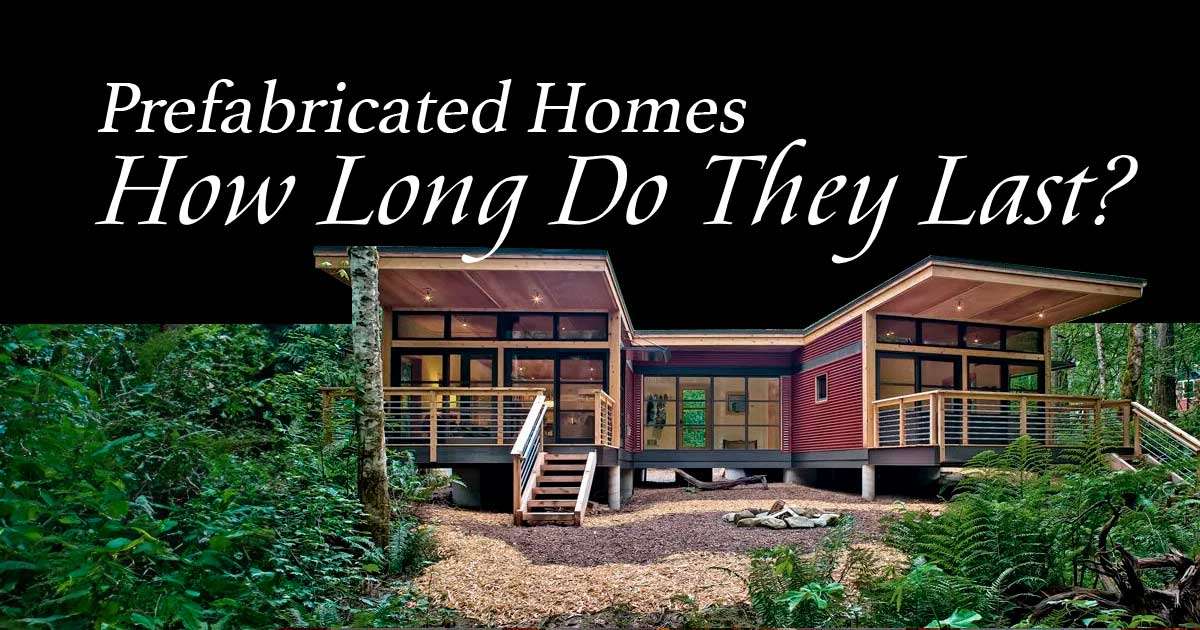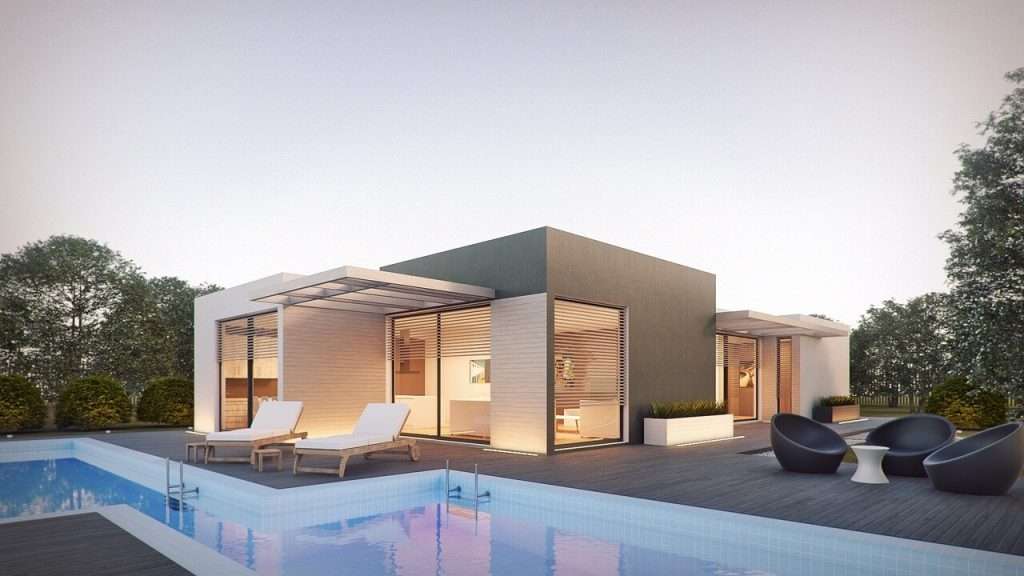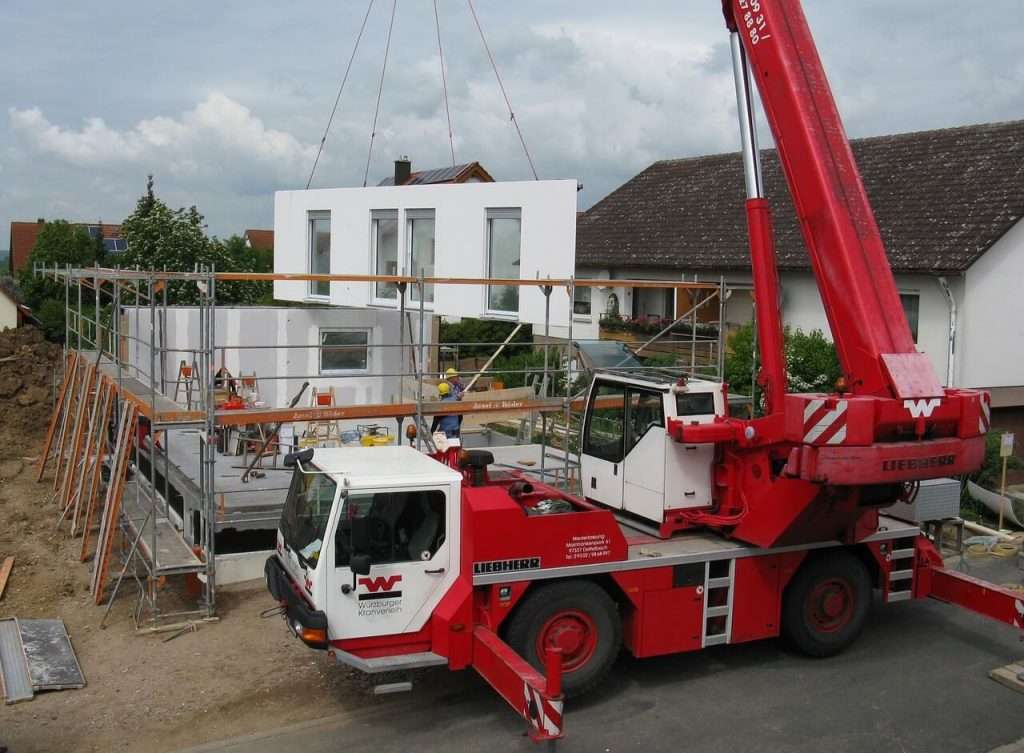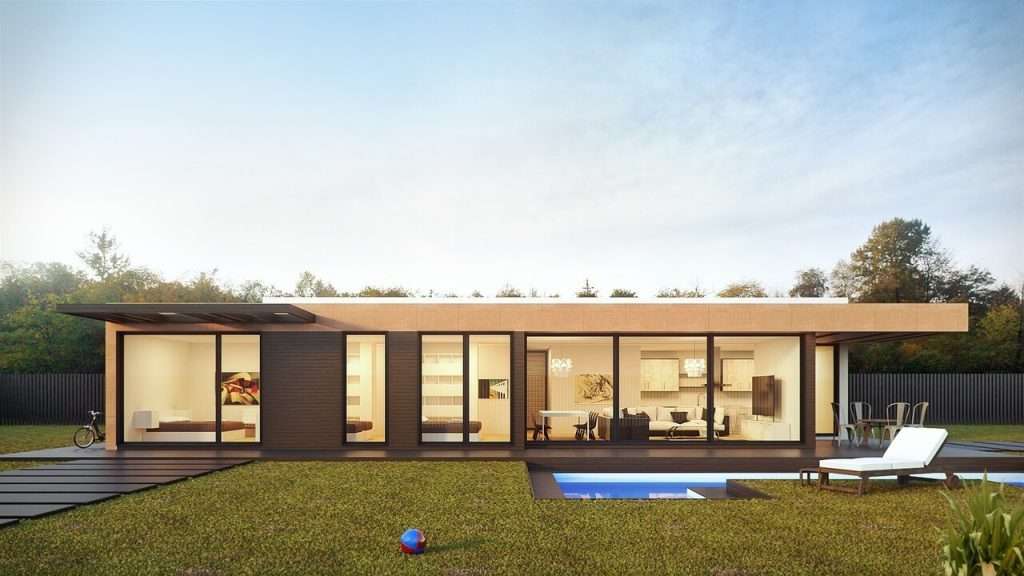How Long Do Prefab Homes Last?: The Durability of Modern Living Spaces

Prefab homes have changed the housing market by providing a faster and more efficient alternative to traditional buildings. As prospective homeowners increasingly ask, “How long do prefab homes last?” it becomes crucial to explore their durability. Let’s delve into the factors influencing their lifespan and discover ways to ensure they stand the test of time.
What are Prefabricated Homes?
Prefabricated homes, also called prefab or modular homes, are houses that are built in a controlled factory setting instead of on-site. In contrast to traditional site-built homes, prefab homes are made by putting together different parts or modules in a workshop. These are then brought to the building site and finished off there. These homes often feature modular design, allowing for customization of individual sections to meet specific design preferences.
The on-site assembly process is quicker than traditional construction, contributing to overall cost and time efficiency. Prefab homes come in various styles, from simple and cost-effective models to more elaborate, customized options, and they are designed with energy efficiency in mind. Different types of prefabricated construction methods, including modular, panelized, and manufactured homes, offer flexibility to cater to diverse architectural preferences and construction requirements.
Key features of prefab homes include their energy efficiency, streamlined construction process, and variety of styles. The controlled factory environment ensures precise construction and minimizes the impact of weather conditions, resulting in cost savings and quicker assembly times. Prefab homes have become a popular choice for those seeking a more efficient and customizable alternative to traditional site-built homes, offering a range of options to suit different tastes and budgets.

Materials Used for Prefabricated Homes
The materials used in building prefabricated homes can vary based on the construction method, design preferences, and the specific requirements of the homeowner. However, some common materials used in the construction of prefabricated homes include:
Structural Frames
- Steel: Prefab homes often feature steel frames for their structural integrity and durability. Steel is strong and lets you be creative with your designs.
- Wood: Timber frames are commonly used in certain types of prefab construction. Wood is lightweight, renewable, and offers natural insulation properties.
Exterior Walls
- Insulated Panels: Many prefab homes utilize insulated panels made of materials like expanded polystyrene (EPS) or polyurethane foam sandwiched between structural layers. These panels provide efficient insulation.
- Fiber Cement: Prefab homes may have exterior walls made from fiber cement boards, which are durable, weather-resistant, and fire-resistant.
Roofing Materials
- Metal Roofing: Metal roofs are common on prefab houses because they last a long time, are strong, and reflect sunlight, which saves energy.
- Asphalt Shingles: Some prefab homes use traditional asphalt shingles for roofing, providing a cost-effective and aesthetically versatile option.
Interior Finishes
- Drywall: Interior walls are often finished with drywall for a smooth and paintable surface. Drywall is lightweight and easy to install.
- Laminate or Hardwood Flooring: Depending on design preferences, prefab homes may feature laminate or hardwood flooring, providing a range of options for aesthetics and durability.
Windows and Doors
- Vinyl or Aluminum Frames: Windows and doors in prefab homes often have frames made of materials like vinyl or aluminum, offering durability and energy efficiency.
- Double or Triple Glazing: To improve insulation and lower heat loss, people often use energy-efficient windows with double or triple glass.
Insulation
- Spray Foam: Spray foam insulation is used in a lot of prefab houses because it makes a barrier that is both seamless and energy-efficient.
- Fiberglass: Fiberglass insulation is another common choice, providing thermal resistance and sound absorption.
Siding Materials
- Vinyl Siding: Prefab homes may feature vinyl siding for its low maintenance, durability, and variety of colors.
- Wood or Composite Siding: For a more traditional look, some people choose wood or composite flooring because of the way they look naturally.
It’s important to note that the specific materials used can vary among different prefab home manufacturers and construction methods. Additionally, customization options allow homeowners to choose materials based on their preferences, budget, and desired energy efficiency. If your goal is to achieve a durable prefab home, it will be best if you invest in high-quality materials.

How Long Do Prefab Homes Last?
A well-maintained prefab home typically lasts for several decades, with some instances showcasing their resilience for 50 years or more. However, it’s important to understand that variables like material quality, construction accuracy, maintenance practices, and the environment in which the home is located can affect lifespan.
To make modular homes last long, homeowners are advised to diligently adhere to proper maintenance practices, closely follow manufacturer guidelines, and opt for high-quality construction materials. This proactive method not only protects the investment, but it also makes the structure last longer. Moreover, as the prefab housing industry continues to advance, ongoing improvements in materials and construction techniques are anticipated to further extend the already impressive lifespans of these homes, offering homeowners a reliable and sustainable housing solution well into the future.
Factors Influencing Prefab Home Longevity
If you’re wondering if prefab homes are durable enough, it depends on different factors. To figure out how long do modular homes last, here are some factors to consider:
1. Quality of Materials
The backbone of any durable structure lies in the quality of its materials. Prefab homes, constructed with high-grade materials, prove their durability. From robust steel frames to resilient insulation, these homes withstand the test of time, addressing the question of whether prefab homes are durable.
2. Construction Techniques
The way a prefab home is assembled plays a pivotal role in determining its lifespan. The accuracy and care put into the building’s construction aid in its structural stability. Modern techniques, such as advanced welding and assembly processes, enhance the durability of prefab homes, ensuring they last long.
3. Climate and Location
The environment in which a prefab home is placed can impact its longevity. The climate affects wear and tear in many ways, from high and low temperatures to changes in humidity. Additionally, the geographical location, including susceptibility to natural disasters, should be considered when estimating the lifespan of a prefab home, addressing concerns about whether prefab homes are good in various conditions.
Tips to Make Your Modular Homes Last Long
To make your prefab home durable and last for many more years, here are some useful tips you can use:
- Regular Inspections: Conduct routine inspections of your prefab home, checking for any signs of wear, damage, or potential issues. This includes inspecting the roof, walls, foundation, and other structural components. Finding and fixing problems early on can keep them from getting worse in the future.
- Prompt Maintenance: Address any maintenance or repair needs promptly. Fixing small problems quickly can keep them from becoming big ones, like fixing a leak, replacing damaged walls, or fixing problems with the structure. Follow the manufacturer’s maintenance guidelines to ensure you’re caring for your prefab home properly.
- Proper Ventilation: Make sure there is enough air flow to keep wetness from building up, which can cause mold and other problems. A healthy indoor setting and the structural integrity of the home are both supported by good ventilation. Clean the vents often and make sure nothing is blocking the airflow.
- Use Quality Materials: Opt for high-quality materials during the construction and any subsequent renovations or modifications. Quality materials are a big part of how long and well your prefab home lasts. Talk to professionals to help you pick materials that will work well in your area’s climate and surroundings.
- Manage Water Drainage: Proper water drainage is crucial for preventing water-related damage. Quality materials are a big part of how long and well your prefab home lasts. Talk to professionals to help you pick materials that will work well in your area’s climate and surroundings.
- Energy-Efficient Upgrades: To make your prefab home last longer and work better generally, think about making upgrades that use less energy. This could mean replacing old insulation, windows, and doors with new ones that are more energy efficient, save money on power bills, and make the house last longer.
- Follow Manufacturer Guidelines: Follow the manufacturer’s instructions for repairs, upkeep, and any changes you make. Manufacturers give specific instructions on how to make sure that their prefab homes work well and last a long time. Following these rules is very important for keeping your home’s structure strong.
- Protect Against Pests: Implement measures to protect your prefab home against pests. Regularly inspect for signs of pests and take preventive actions, such as sealing entry points and keeping the surroundings clean. Pests can cause damage to both the interior and exterior of the home if not addressed promptly.
- Consider Climate-Specific Adjustments: Make climate-specific adjustments to your home. If you live in an area prone to extreme weather conditions, such as high winds or heavy snowfall, consider additional reinforcements or modifications to ensure your prefab home can withstand these challenges.
- Document and Keep Records: Keep careful records of all the repairs, checks, and changes you make to your prefab home. This paperwork can be useful for future use, resale, or insurance claims.
By incorporating these tips into your maintenance routine, you can enhance the longevity of your prefabricated home and enjoy a durable and sustainable living space for years to come.

Are PreFab Homes Good?
In the quest for a durable and enduring living space, your prefab home stands as a testament to modern innovation. Regular inspections, prompt maintenance, and a commitment to using high-quality materials are the cornerstones of ensuring its longevity. Proper ventilation, efficient water drainage, and adherence to manufacturer guidelines further contribute to the structural integrity of your home. Energy-efficient upgrades not only enhance sustainability but also add to its overall resilience.
From climate-specific adjustments to protective measures against pests, a comprehensive approach to care is essential. As the prefab housing industry continues to evolve, the integration of advancements in materials and construction techniques holds promise for even longer lifespans. By diligently following these tips and embracing the best practices for prefab home care, you not only safeguard your investment but also create a living space that endures, providing comfort and security for you and generations to come.

